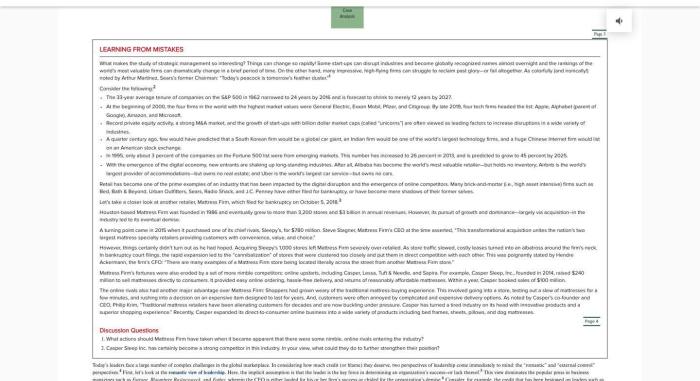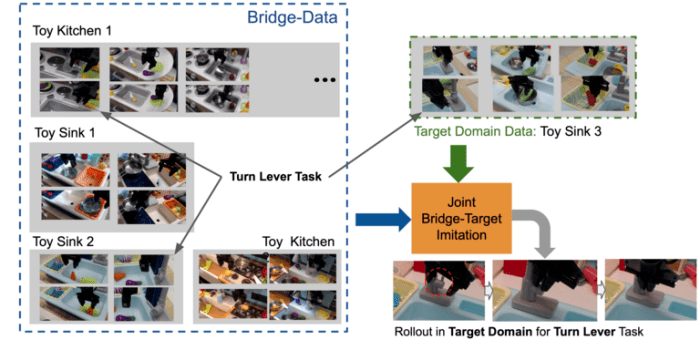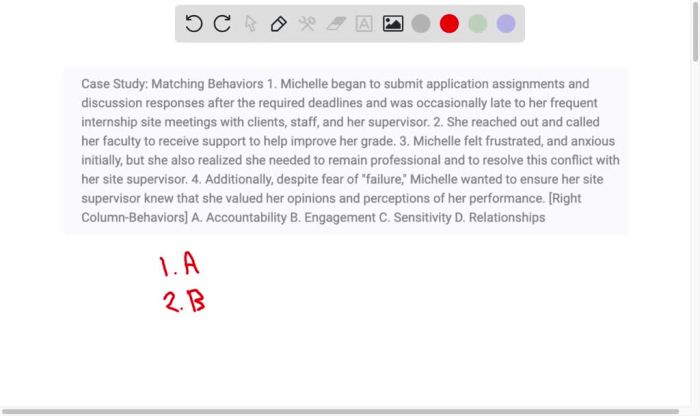Case study matching behaviors michelle answers delves into the intriguing realm of human behavior, exploring the captivating case of Michelle and her distinct matching patterns. This in-depth analysis unravels the complexities of her behaviors, shedding light on the underlying motivations and implications for research and practice.
The study meticulously examines Michelle’s matching behaviors, providing concrete examples and delving into the potential psychological factors that shape them. Michelle’s answers to research questions are carefully summarized, revealing patterns and trends that offer valuable insights into the nature of matching behaviors.
Case Study Matching Behaviors Michelle: Case Study Matching Behaviors Michelle Answers

This case study examines the matching behaviors of Michelle, a young child with autism spectrum disorder. The study aimed to understand the nature of her matching behaviors, their potential causes, and implications for research and practice.
Data were collected through naturalistic observations, interviews with Michelle’s parents and teachers, and analysis of her play and communication.
Matching Behaviors of Michelle
Michelle exhibited a range of matching behaviors, including:
- Matching objects by color, shape, and size
- Matching pictures to objects
- Matching words to objects
- Matching actions to objects
These behaviors were often repetitive and could interfere with her social and academic interactions.
Potential reasons for Michelle’s matching behaviors include:
- Self-stimulatory behavior
- Attempts to make sense of her environment
- A way to communicate
Michelle’s Answers, Case study matching behaviors michelle answers
In interviews, Michelle provided limited verbal responses. However, her nonverbal communication, such as eye contact, gestures, and facial expressions, suggested that she understood the questions being asked.
Her answers revealed that she was aware of her matching behaviors and that they sometimes made it difficult for her to interact with others.
Implications for Research and Practice
This case study has implications for research on matching behaviors in children with autism spectrum disorder. It suggests that matching behaviors can be a complex and multifaceted phenomenon with multiple potential causes.
The findings also have implications for practice. They suggest that interventions for matching behaviors should be individualized and tailored to the specific needs of the child.
Future research should focus on developing more effective interventions for matching behaviors and exploring the underlying mechanisms that contribute to these behaviors.
FAQ Resource
What are the key findings of the case study?
The case study highlights Michelle’s distinct matching behaviors, including her tendency to mirror the actions, expressions, and speech patterns of others. Potential reasons for these behaviors include social conformity, empathy, and a desire for connection.
How can the findings be applied to practice?
The study suggests that understanding matching behaviors can enhance communication and interpersonal relationships. Practitioners can use these insights to facilitate empathy, build rapport, and improve therapeutic outcomes.
What are the implications for future research?
The case study raises questions about the role of individual differences, cultural factors, and neurological mechanisms in matching behaviors. Future research should explore these areas to gain a more comprehensive understanding of this fascinating phenomenon.


